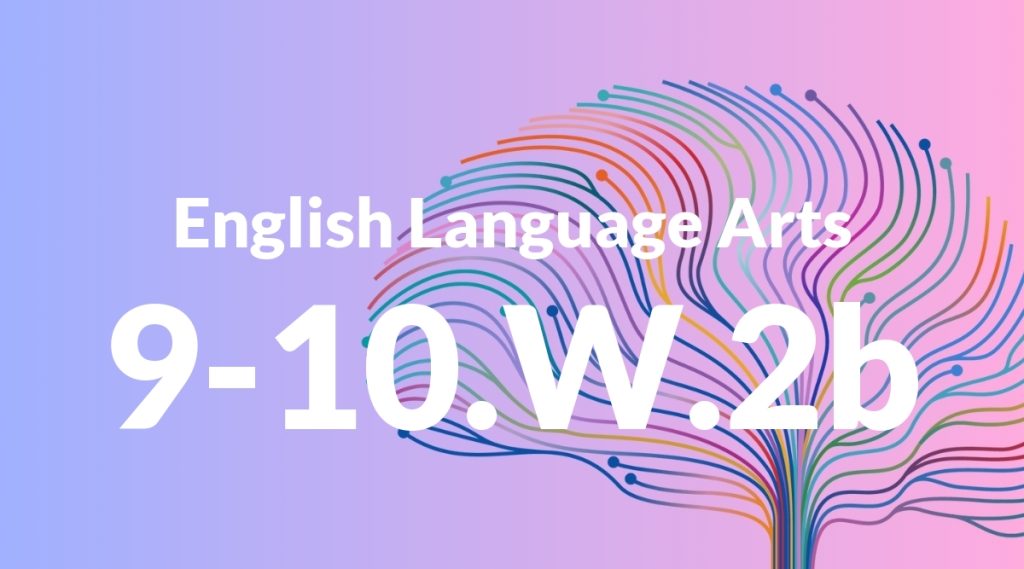Standard: 9-10.W.2b – Develop the topic with well-chosen, relevant, and sufficient facts, extended definitions, concrete details, quotations, or other information and examples appropriate to the audience’s knowledge of the topic.
Grade level: Grade 9-10
Subject: English Language Arts
Domain: Writing
Teacher Overview
This standard emphasizes the importance of using relevant and sufficient evidence to develop a topic. It is crucial in helping students create well-supported and coherent written works, which are essential skills in both academic and real-world contexts. Students should understand how to find and evaluate credible sources and how to differentiate between fact and opinion.
Students will be able to create complex, well-structured compositions that effectively communicate their ideas with strong, relevant evidence.
Common Misconception 1
One common misconception is that any information can be used to develop a topic. This is incorrect because irrelevant information can confuse the reader and weaken the argument.
Intervention 1
To address this, provide exercises where students practice identifying and selecting the most relevant information for a given topic.
Common Misconception 2
Another misconception is that the quantity of information is more important than its quality. This is incorrect because an overload of weak evidence can dilute the strength of the argument.
Intervention 2
Implement activities that focus on evaluating the quality of evidence and selecting the most impactful pieces to support their argument.
Prerequisite Knowledge
Students should have a basic understanding of how to identify credible sources, differentiate between fact and opinion, and use simple evidence to support their ideas.
Subsequent Knowledge
After mastering this standard, students will be able to craft complex, multi-paragraph compositions with nuanced arguments and varied evidence types, enhancing their overall writing proficiency.
Instructional Activities
- Analyzing and discussing examples of well-developed topics in essays
- Engaging in peer review sessions to critique the relevance and quality of evidence in each other’s work
- Creating outlines that prioritize relevant and high-quality evidence
- Conducting research projects that require the use of varied evidence types
- Writing practice essays with a focus on developing the topic with strong support




